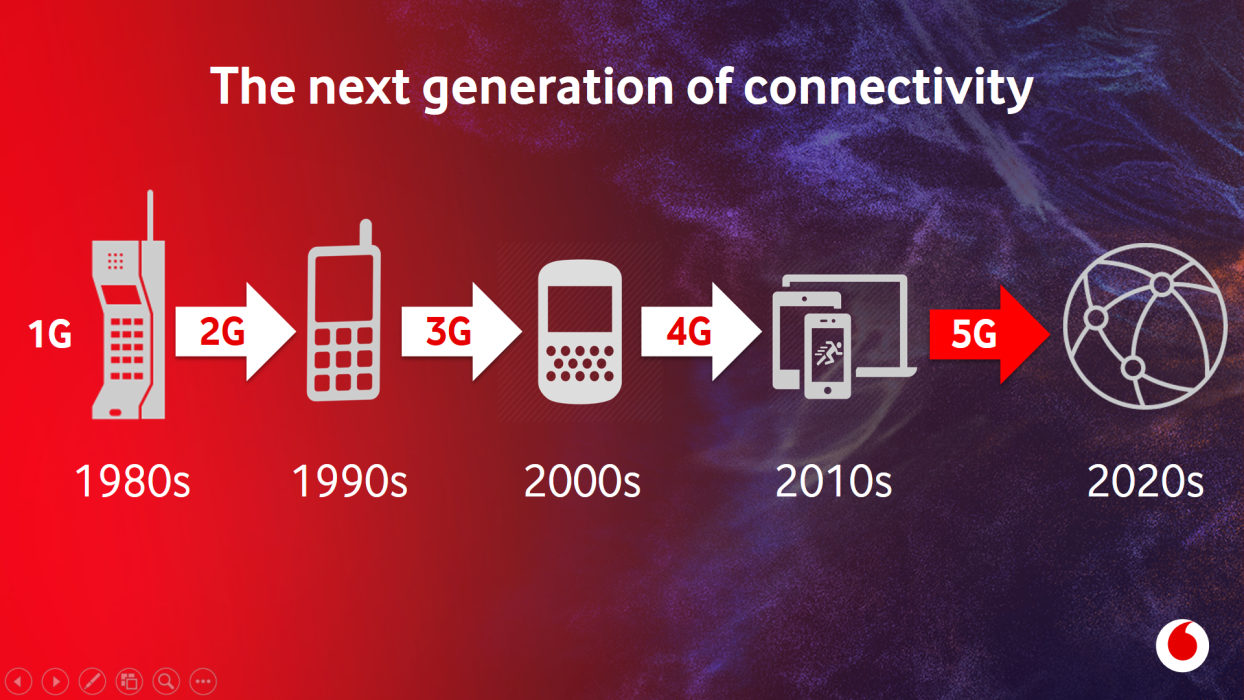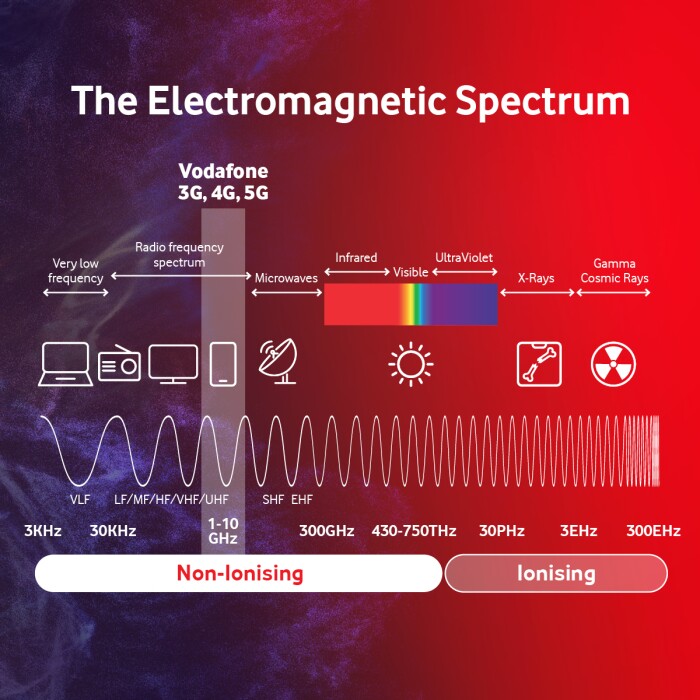We know the safety and wellbeing of whānau is a top priority for New Zealander’s in these exceptional times. With the rise of misinformation about 5G on the internet, we’ve seen a lot of conspiracy theories circulating and confusing New Zealanders.
Unfortunately this means people can be tricked into being concerned about health impacts to you and your whānau. To help give you piece of mind, we’ve put together some details to explain how 5G works, and to reassure you that mobile networks are safe.
What does 5G stand for?
5G simply means “fifth generation”. Just like a new iPhone, each new mobile network technology gets assigned a number.
It can take years for the next generation to arrive, and at Vodafone NZ we’re proud to have been leaders in bringing lots of this new technology to our shores over this time:
- 1G = 1980s, bringing you mobile calling
- 2G = July 1993, which made SMS / text messaging a reality
- 3G = August 2005, meaning we could email and surf the internet on our phones (albeit slowly)
- 4G = February 2013, making video calling and viewing easy - plus internet surfing much faster
- 5G = December 2019, heralding the era of connected devices (Internet of Things, with many more applications and mobile devices in our homes, businesses and cities)

I think I have a 5G phone – how can I be sure?
To access the fifth generation mobile network (5G), you need to have a 5G capable device (and you also need to be on a 5G mobile plan!).
So far, there are a limited range of Samsung devices. Apple has not yet released a 5G-capable iPhone.
Where can I get 5G coverage?
At Vodafone NZ, we have approx. 1,600 cell sites (mobile phone masts/towers) across Aotearoa – most are equipped with 2G, 3G and 4G technology. Since August 2019 we’ve been upgrading these existing cell sites to also include 5G technology.
As of March 2020, we had upgraded approx 120 cell sites to include 5G technology in parts of Auckland, Wellington, Christchurch and Queenstown. You can find updated coverage maps here.
My home Wi-Fi includes ‘5G’ in the number. Does that mean I’m on 5G?
That can be pretty confusing! On your modem, you may come across terms like '5G' or 5GHz WiFi and 2.4GHz WiFi.
This has nothing to do with the 5G mobile networks – instead, 5GHz Wi-Fi is just a faster Wi-Fi frequency.
What is the difference between ionising and non-ionising radiation?
Nanogirl, scientist Michelle Dickinson, explained this really well in the NZ Herald last year. To quote her directly:
“Radiation is split into two broad categories: ionising and non-ionising. Non-ionising radiation doesn't carry enough energy to "ionise", or strip electrons from atoms and molecules. It therefore doesn't have enough energy to damage our DNA.
“The radiation emitted from radios, mobile phones, phone towers and Wi-Fi routers – RF radiation - is non-ionising. It sits at the low-energy end of the electromagnetic spectrum and is much safer than high-energy ionising radiation like x-rays.
“With every new mobile phone release comes renewed concern around the effect of this technology on our health, and fears surrounding mobile phone use and the possible effect of radiation on the human body are ongoing.
“This isn't helped by the World Health Organisation declaring that mobile devices are a ‘Class 2B carcinogen’, which really sounds scary. To put things in perspective, however, other items in the 2B category include coffee, pickles and being a carpenter.”
I’ve heard 5G mobile uses higher radio frequencies than 4G or previous generations – surely this means it is bad?
The current 5G technology we’re using at Vodafone NZ uses 3.5GHz radio spectrum, meaning it sits in a very similar frequency to 3G (2.1GHz) and 4G (700MHz to 2.6GHz) – just like radio transmitters and TV sets.

How do I know it is safe living near a mobile cell tower/mast?
All our mobile technologies including 3G, 4G and 5G operate well within the safety limits set out by international guidelines. This means we adhere to strict, internationally approved safety rules to protect people against any potential health risks. The health and safety of customers and communities is the absolute priority for Vodafone and we follow all radiofrequency standards for mobile phone towers.
Vodafone’s mobile cell sites always operate at a fraction of the radio emissions safety standards limit, so you can be assured that we always comply and you’re safe living in the near vicinity.
I’ve heard that 5G can cause COVID-19?
This is categorically false – and the Prime Minister addressed these harmful rumours in her press conference on April 8 (Newshub: Prime Minister Jacinda Ardern says conspiracy theories linking 5G and COVID-19 are 'just not true').
The Ministry of Health also includes a Q&A on false links to COVID-19 on their website.
Where can I go to get more info?
You should always verify facts and think critically about information that is being presented to you. The New Zealand government offers some great resources, including:
Is Vodafone NZ cutting down trees to build 5G cell sites?
No – and trees are also protected under the Resource Management Act (RMA).
Is Vodafone NZ building 5G cell sites by stealth?
No – we take our community obligations seriously and all new or existing cell site upgrades comply with the Telecommunications Forum industry guidelines for wireless upgrades. This means we follow a strict engagement processes.
For more information about our 5G rollout, please visit Vodafone.co.nz/5G
